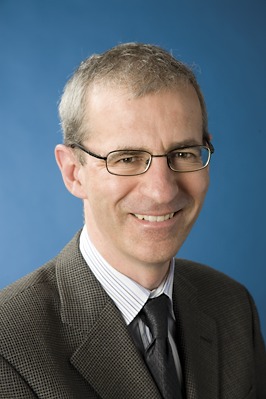
The only sense that is common in the long run, is the sense of change—and we all instinctively avoid it.
E.B. White
The focus of this issue of Canadian Family Physician is the changing work of family physicians in Canada.1–4
I began my academic family medicine career at Women’s College Hospital in the heart of downtown Toronto, Ont, in 1994. At that time Women’s College had 1 of only 2 remaining family practice inpatient medical units in the city, and in addition to building my own ambulatory practice, I was hired as the director of the 10-bed unit.
The inpatient unit had been originally created in the 1980s by then Chief of Family Medicine, Dr Hollister King. Dr King came to Women’s College from Midland, Ont, where he recognized a gap in training family medicine residents to provide in-hospital care in smaller communities across the province. At that time almost all postgraduate training in family medicine took place in academic family practice teaching units in the 5 Ontario medical schools.
Our inpatient ward was a busy place—almost always full and in the winter months overflowing as we borrowed beds from our internal medicine colleagues to look after our patients acutely ill with common conditions such as pneumonia, asthma and chronic obstructive pulmonary disease exacerbations, congestive heart failure, and the like. There were many advantages to looking after our own patients and those of our community-based colleagues in-hospital, including greater continuity of care and improved communication and follow-up after discharge, and, as Dr King had hoped, graduates of our residency program were more likely to look after patients in-hospital after graduation than their peers who had not had a similar training experience were.5
Working in that setting was the springboard for my own interest in clinically driven family medicine research and quality improvement. One of the things that we were able to show using data collected by the Canadian Institute for Health Information was that, for the top 10 most common admitting diagnoses, the cost-per-weighted case and lengths of stay for our patients were similar to those of our internal medicine colleagues, but that our patients had more comorbid illness. One of the first pilot randomized controlled trials that I conducted was to assess the effects on readmission of a postdischarge home visit on a handful of patients at high risk of readmission within 30 days of discharge—patients now known as hot spots.6
Fast forward to today and the results of a study by Neimanis and colleagues (page 221).7 In 2014 the authors surveyed a group of family physicians affiliated with St Joseph’s Healthcare Hamilton in Ontario.7 Further, they were able to compare responses to the 2014 survey with previous ones for 1977 and 1997. Not surprisingly they found that family physicians’ hospital activities and attitudes continued to change substantially from 1977 to 1997 and 2014 in this urban hospital setting. Most of the respondents had stopped providing direct inpatient care, with a few continuing to provide supportive care.
Neimanis and colleagues found that both attitudinal changes in family physicians toward hospital work and system drivers explained the changes seen over the past nearly 4 decades. Among the attitudinal changes were that in 2014 less than a third of respondents thought that patients expected to see them while in-hospital (compared with 100% in 1977 and 91% in 1997). Although the proportion of respondents who believed that they could provide better overall care if they were able to attend in-hospital patients and who said they found attending inpatients satisfying was lower than in 1977 and 1997, it was still considerable at just under 50% and just over 60%, respectively.
The drivers causing family physicians in urban centres to give up looking after patients in-hospital include shorter hospital stays for common conditions, a shift from inpatient to outpatient care for many conditions, and the resultant increase in complexity of outpatient care.7
Other models of inpatient care have emerged over the past 2 decades that have filled the gap, some of which involve family physicians becoming focused practitioners—hospitalists. But as the authors discovered, most in their study still saw the hospital as “a focus for identifying with their family physician community, a place to interact with other specialist colleagues, and a source of some continuing medical education.”7
In change, has something important been lost?
Footnotes
Cet article se trouve aussi en français à la page 185.
References
- 1.Collins A, Leier B. Can medical assistance in dying harm rural and remote palliative care in Canada? Can Fam Physician. 2017;63:186–7. 189–90. (Eng), 195–8 (Fr). [PMC free article] [PubMed] [Google Scholar]
- 2.Kaczorowski J, Myers M, Gelfer M, Dawes M, Mang E, Berg A, et al. How do family physicians measure blood pressure in routine clinical practice? National survey of Canadian family physicians. Can Fam Physician. 2017;63:e193–9. [PMC free article] [PubMed] [Google Scholar]
- 3.Krueger P, White D, Meaney C, Kwong J, Antao V, Kim F. Predictors of job satisfaction among academic family medicine faculty. Findings from a faculty work-life and leadership survey. Can Fam Physician. 2017;63:e177–85. [PMC free article] [PubMed] [Google Scholar]
- 4.Liddy C, Hunter Z, Mihan A, Keely E. Use of Facebook as part of a social media strategy for patient engagement. Can Fam Physician. 2017;63:251–2. [PMC free article] [PubMed] [Google Scholar]
- 5.Pimlott N, Holzapfel S, Cummings S. Short report: does training in a family practice inpatient service affect practice after graduation? Can Fam Physician. 2001;47:983–5. [PMC free article] [PubMed] [Google Scholar]
- 6.Gawande A. The hot spotters. Can we lower medical costs by giving the neediest patients better care? The New Yorker. 2011 Jan 24; [PubMed] [Google Scholar]
- 7.Neimanis I, Woods A, Zizzo A, Dickson R, Goebel C, Corsini J, et al. Role of family physicians in an urban hospital. Tracking changes between 1977, 1997 and 2014. Can Fam Physician. 2017;63:221–7. [PMC free article] [PubMed] [Google Scholar]


